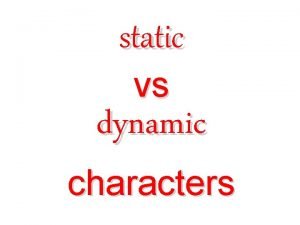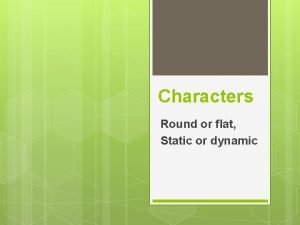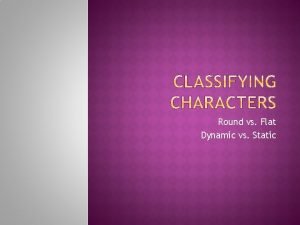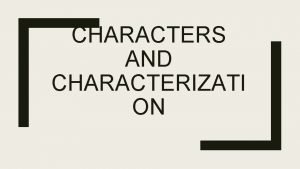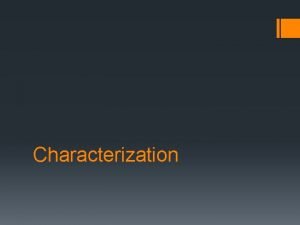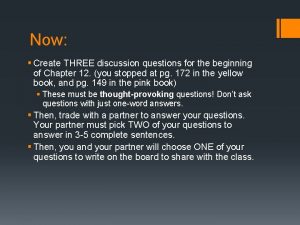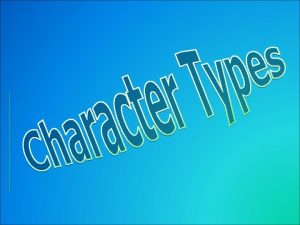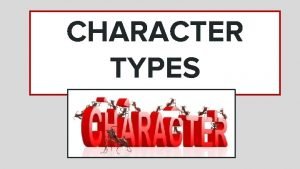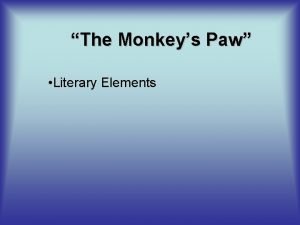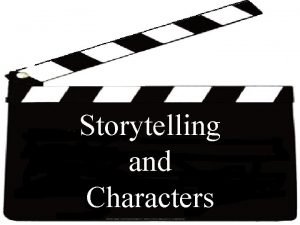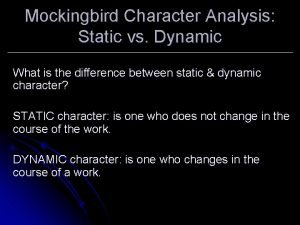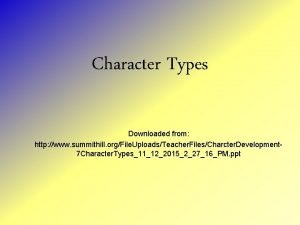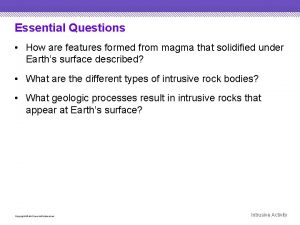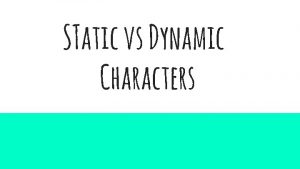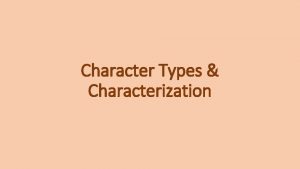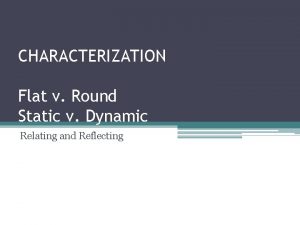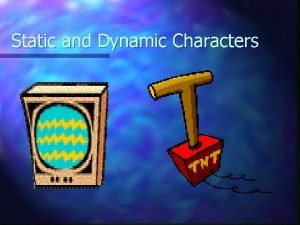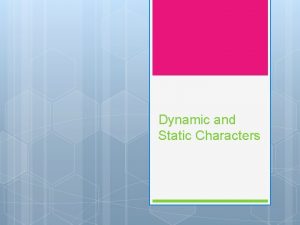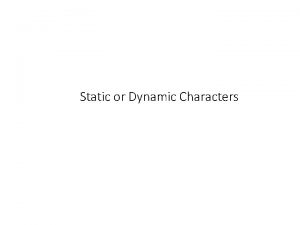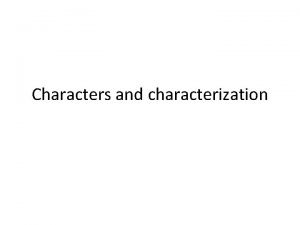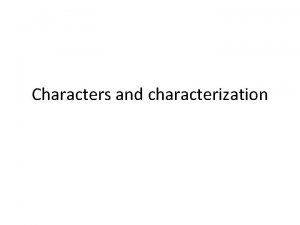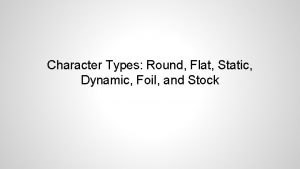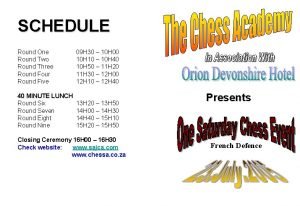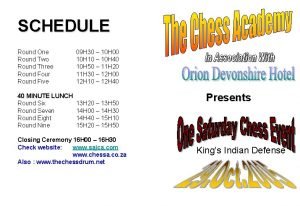Characters Round or flat Static or dynamic Characterization














- Slides: 14

Characters Round or flat, Static or dynamic

Characterization: round or flat? Think about round and flat characterization like a painting. If you're an artist, you must decide how much detail to put into a painting. Do you want many lines and many colors, or just an outline and only black and white? Authors must decide how much detail to include about each character: which characters are most important; how will giving detail, or not giving detail, affect the story?

Round A round character is a major character in a work of fiction who encounters conflict and is changed by it. Round characters tend to be more fully developed and described than flat, or static, characters. These round characters seem as real to you as people you know in real life. A writer employs a number of tools or elements to develop a character, making him or her round, including description and dialogue. A character's responses to conflict and his or her internal dialogue are also revelatory.

Flat Characters that are not described well, that you're not given much information about, are flat characters. Consider a drawing: a three-dimensional drawing gives more detail than a one-dimensional drawing. If you draw a flat picture of a house, for example, you can only see one side of it. You cannot see three of the four sides. This is how a flat character is; you can only see a few characteristics of the character. There are many things you cannot "see, " or many details you are not given by the author.

A flat character is a minor character in a work of fiction who does not undergo substantial change or growth in the course of a story. Also referred to as ""static characters, " flat characters play a supporting role to the main character, who as a rule should be round.

Round or flat? As a reader, judge whether or not the character is round or flat by trying to write down characteristics of the character. Answer the question: What do you know about the character? If your list is long, with many characteristics, then the character is round. If your list is short, or there's not many characteristics at all, then the character is flat.

Static or dynamic? The key word when dealing with the difference between static and dynamic characters is "change. " The type of change, though, is specific. We are only concerned with internal changes; changes which occur within the character. These would include a major change in personality, or a change in outlook on life.

Another important change that a character may undergo is a change in values, or it could be an overall change in the nature of the character. Do not focus on changes that happen TO a character, but rather, changes that happen WITHIN a character. Think about it this way: Does the event affect the character by changing the character internally?

In order to distinguish static characters from dynamic characters, write down a description of the inner character at the beginning of the story, in other words, what do you initially learn about the character's personality? Answer these three questions: 1. 2. 3. How does the character feel about him/her/itself? How does the character act towards others? What is the character’s goal?

Do the same thing and answer the same questions at the end of the story. Usually, if you're dealing with a dynamic character, you will be able to notice a difference between your personality descriptions as well as between the answers to the three questions. If there is no major difference, the character is static.

Direct/Indirect Characterization is the process by which the writer reveals the personality of a character. Characterization is revealed through direct characterization and indirect characterization. Direct Characterization tells the audience what the personality of the character is.

Example: “The patient boy and quiet girl were both well mannered and did not disobey their mother. ” Explanation: The author is directly telling the audience the personality of these two children. The boy is “patient” and the girl is “quiet. ”

Indirect Characterization shows things that reveal the personality of a character. There are five different methods of indirect characterization:

Speech What does the character say? How does the character speak? Thoughts What is revealed through the character’s private thought s and feelings? Effect on others toward the character. What is revealed through the character’s effect on other people? How do other characters feel or behave in reaction to the character? Actions What does the character do? How does the character behave? Looks What does the character look like? How does the character dress?
 Definition for dynamic character
Definition for dynamic character Difference between flat and round characters
Difference between flat and round characters Round vs dynamic
Round vs dynamic Static character literary definition
Static character literary definition Round and flat characters
Round and flat characters Flat and round characters
Flat and round characters Flat vs round character
Flat vs round character Round vs flat character
Round vs flat character Round and flat characters
Round and flat characters Major vs minor characters
Major vs minor characters Irony in the monkey's paw
Irony in the monkey's paw Dynamic vs static character
Dynamic vs static character Difference between static and dynamic characters
Difference between static and dynamic characters Www.summithill.org
Www.summithill.org Dykes and sills
Dykes and sills
